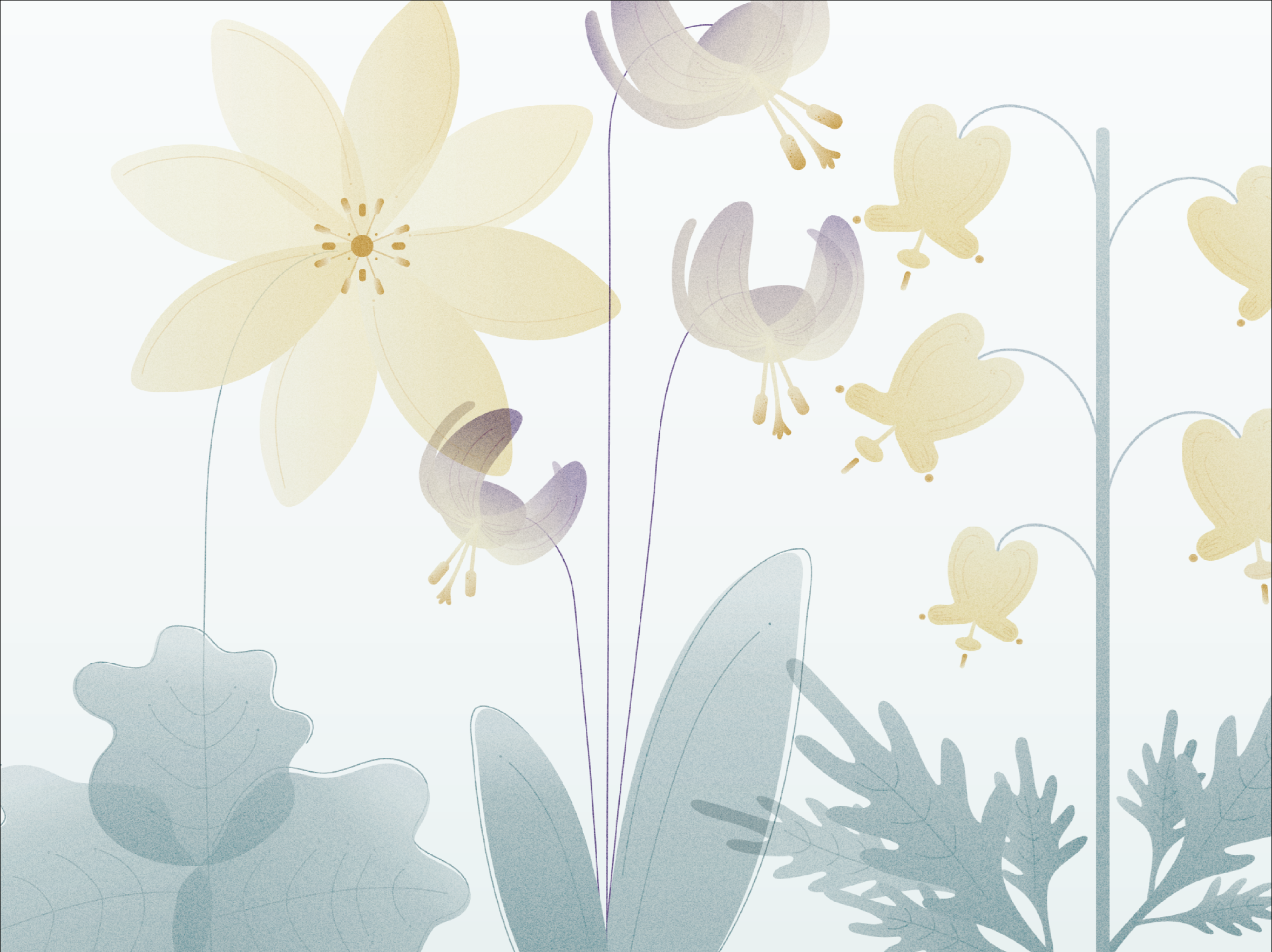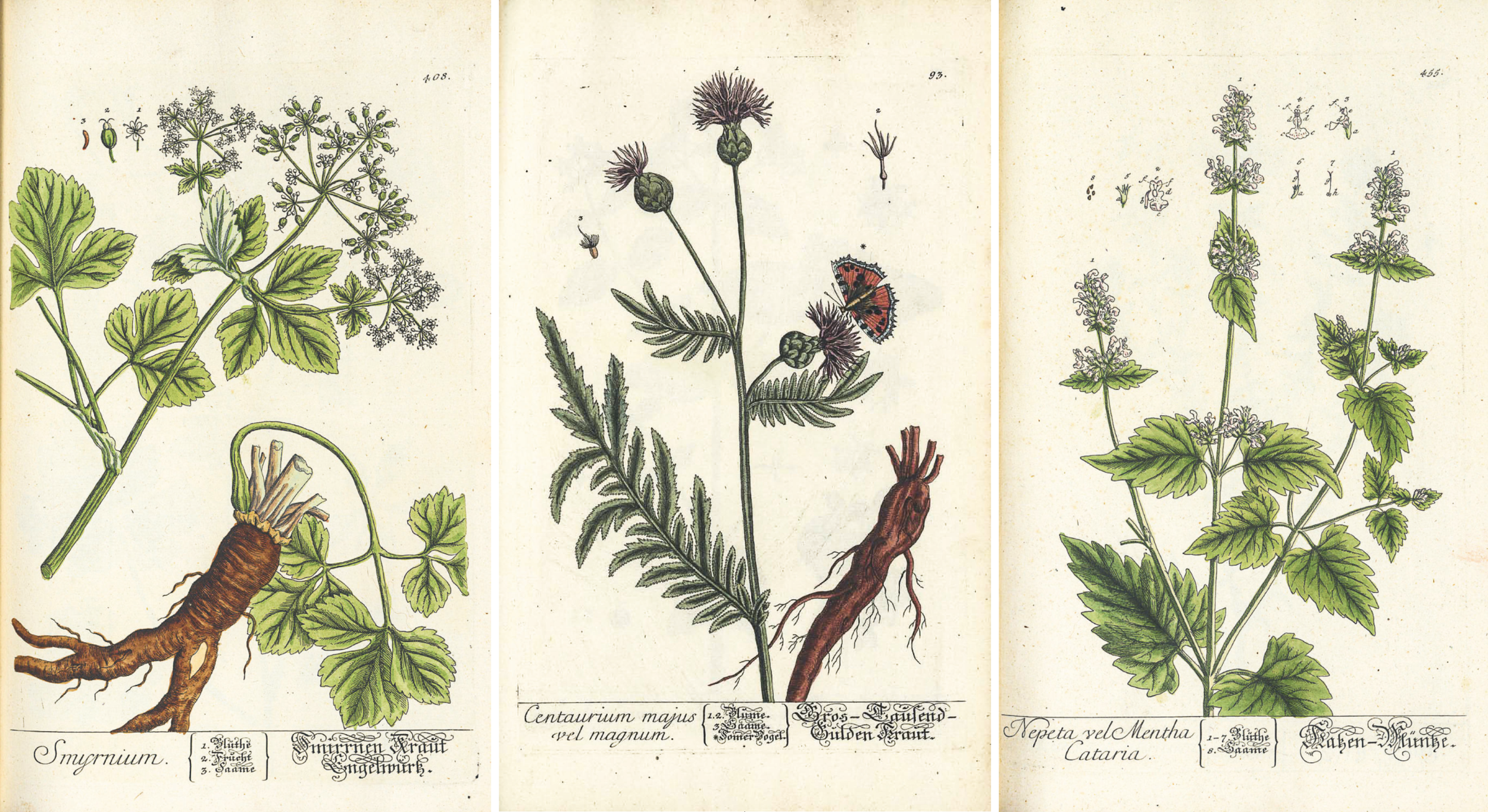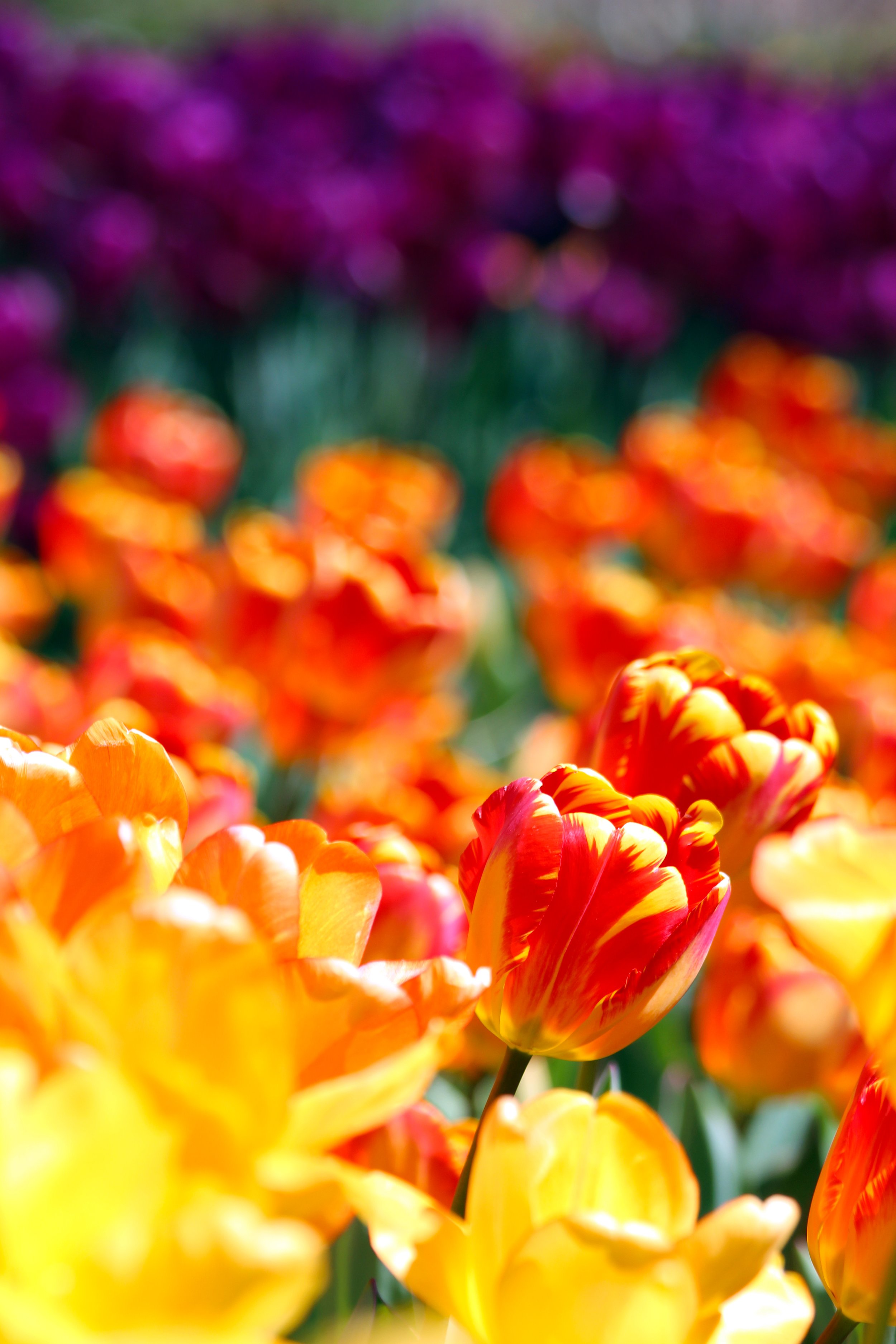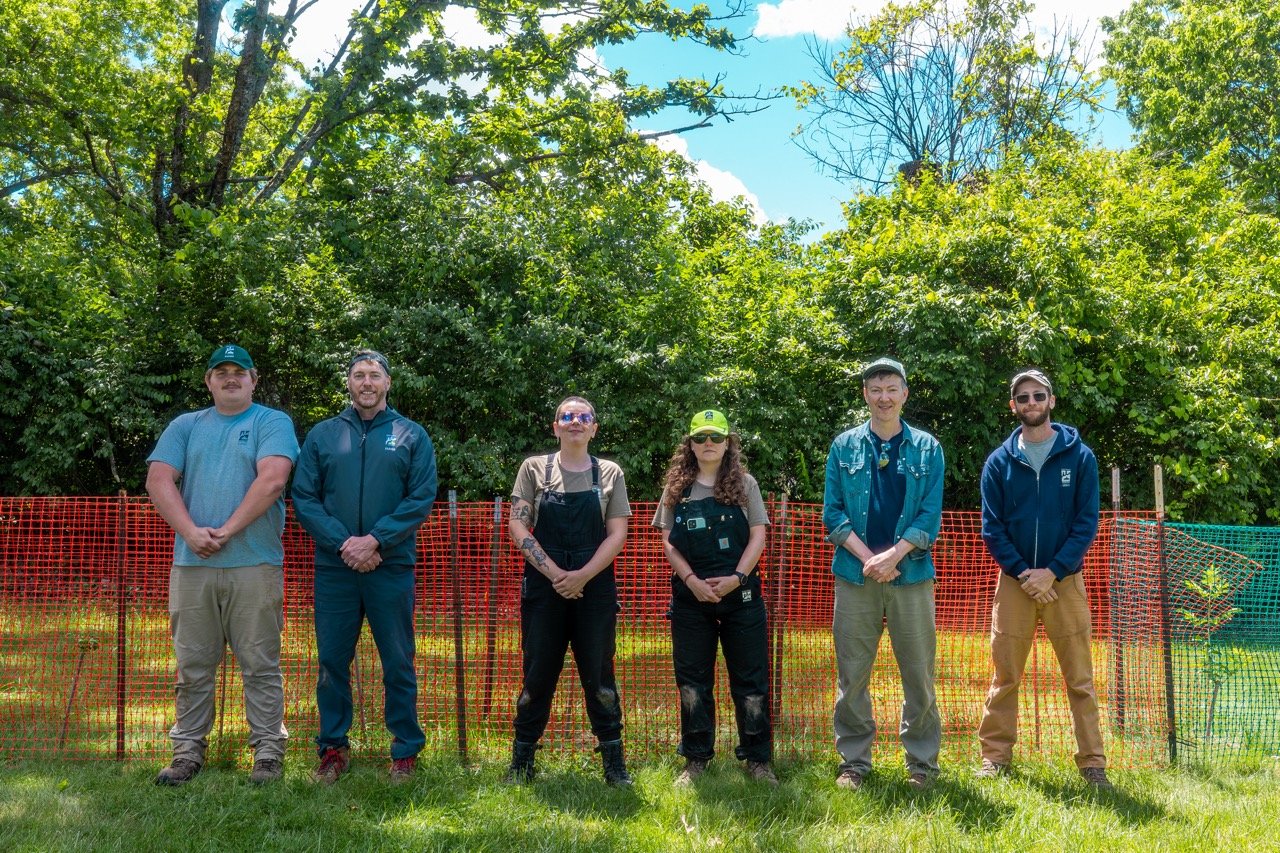Go Native!
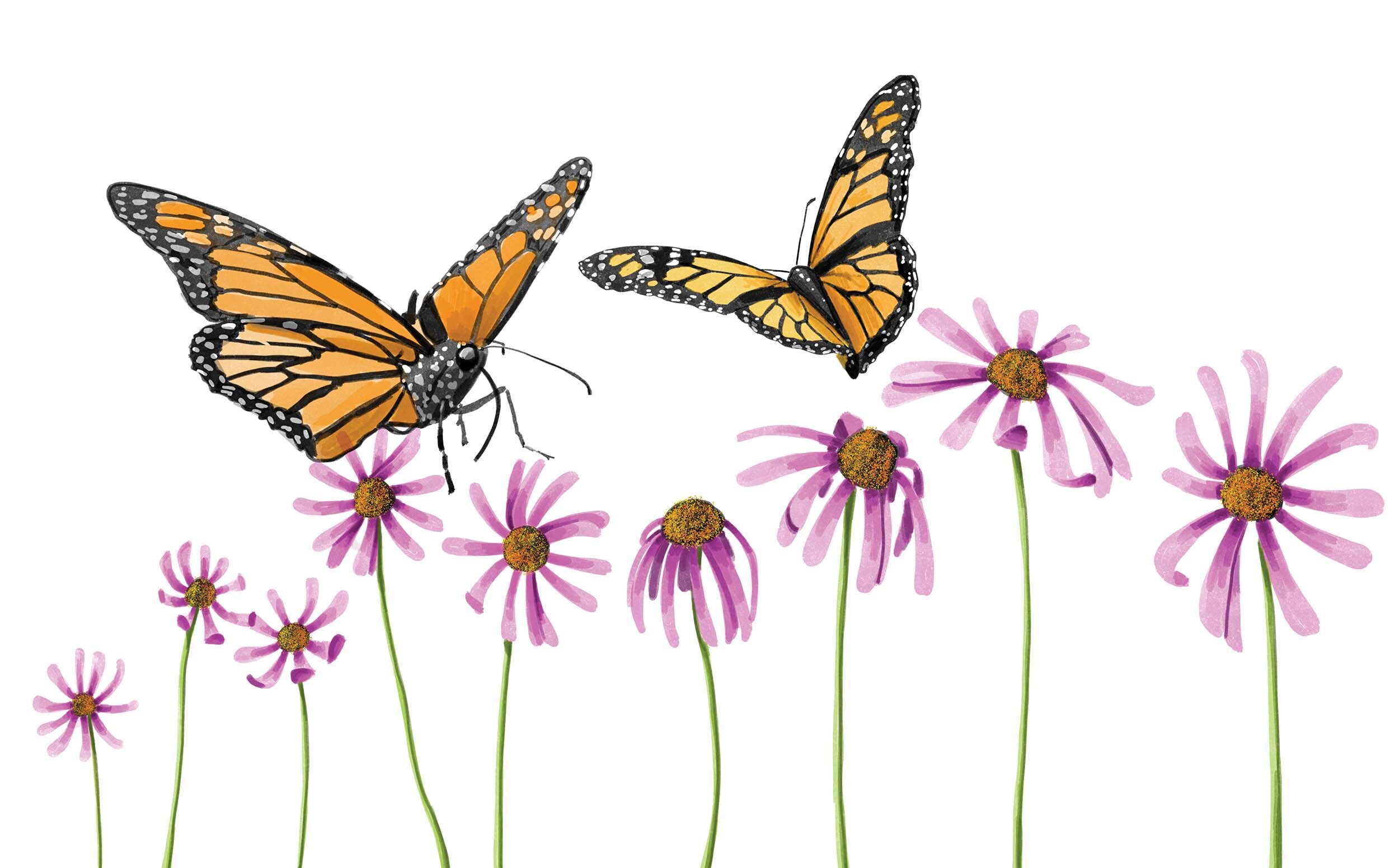
The path of the true gardener inevitably leads to native plants, says Scott Beurlein, Manager of Botanical Garden Outreach at the Cincinnati Zoo & Botanical Garden. Also a garden writer and speaker, Beurlein says natives are unavoidable as research and experience gives the gardener a deeper understanding of how things fit together.
But the question of why you should cultivate native plants in your home landscaping—well, that isn’t as simple to answer as you might think.
“The real answer is that native plants are matched to our native insects, and that diversity of plants is really important in how it sort of sets the ecosystem, especially with pollinators, but also controlling pest insects,” Beurlein says.
Native plants are essential to supporting the pollinators and other insects that have co-evolved to depend on them, and these are integral to maintaining food security at every level of the food chain, including our own. The Xerxes Institute for Invertebrate Conservation, for example, estimates that one out of every three mouthfuls of food that you eat depends on the presence of an insect pollinator, even as pollinator populations, including the 3,000 species of bee, are in decline.
Part of the problem is that “[natural] spaces are getting chunked off and fragmented and smaller and smaller,” Beurlein says. “Gardens are an awfully good way of keeping those plants going.”
Over time, home gardeners have gravitated toward cultivars that have been bred for characteristics appealing to humans, such as new colors or shapes or resistance to pests. And in the process, their suitability to native insects suffers.
This is particularly the case with color variations, such as when you take a green leaf and make it red or purple, says ecologist and University of Delaware professor of entomology Doug Tallamy in an interview with garden writer Margaret Roach, “How Effective are Nativars.” Tallamy is the author of Bringing Nature Home—How You Can Sustain Wildlife with Native Plants. About 90% of insects are “specialists,” he says, meaning they can’t—despite what your vegetable patch travails might suggest—eat everything. The other 10% of insects are “generalists,” but even they can’t eat everything. For food, and often at specific stages of their lifecycle, they require specific species, as Monarch butterflies have come to exclusively rely on milkweed. Sure, through evolution, those preferences can change, but with shrinking habitat, landscapes dominated by hybrids and cultivars that no longer adequately meet their needs, and the prevalence of systemic pesticides, they need all the help they can get—and they need it now.
Build a Backyard Oasis
Turning to native plants for your yard that are part of that larger ecological fabric helps reverse this trend, making your garden an oasis to species that are essential to the ongoing health of the ecosystem.
Further, says Tallamy, because most cultivars are essentially clones, they no longer have the adaptability in their genomes that becomes increasingly essential given the dramatic meteorological swings created by climate change. Native species seem to be better at coping with surprises.
Take, for example, what Beurlein calls the “Easter freeze” of 2007, which killed many exotic plants in our region. “Almost every native plant had the inner sense, or maybe just the genetics, to know, ‘Hey, this is Ohio and spring weather can be really crazy,’” he says. “The native trees hadn’t leafed out yet, or if they had they had a whole secondary system of buds to refoliate once the snow was gone.”
And there are other benefits to natives.
The increased density of a properly done native garden, which should include an all-too-important middle layer of shrubs—for refuge, for shading, for heightened biodensity—is also more effective at carbon sequestration. Layering your garden folds more complexity into the land, and the interplay of these relationships spin off benefits, both practical and not, for you the gardener. A landscape of native plants, shrubs, and trees is going to be better at taking care of itself.
Illustrations by Reed DeWinter
Go see for yourself. Visit a native plants garden—Cincinnati Zoo and Botanical Gardens has beds almost entirely dedicated to natives, says Beurlein, and the Witt Pollinator Garden at Cincinnati Nature Center is a great place to see them in action. The greater variety and level of insect activity is immediately apparent. Green bees flit from bloom to bloom. Among the familiar bumblebees and honeybees buzz solitary bees of different shapes and hues: the sweat bee, leaf cutter, mason bee, and more. Undomesticated solitary bee species are an often-overlooked workhorse of the pollinator realm, and studies show they’re more sensitive to pesticides and lack of habitat.
Choosing Your Plants
So you’re ready to go native. But the endless options can be daunting, especially if you’re intent on maximizing environmental benefits.
You’ll want to include plants that blend with the surrounding landscape for those pickier pollinators and other critters. It’s important to remember that something is better than nothing, and that natives can both look good and do good—although a certain scruffiness does mean more nooks and crannies to support life throughout all four seasons.
So when it comes to planting for benefits, hyper-local, wild varieties are the way to go, and this is the raison d’etre of Keystone Flora, based in what’s called “Wooden Shoe Hollow” on Cincinnati’s West Side. It was started by Steve Slack, Diana Boyd, and Eileen Frechette. Frechette says they “shared a passion for restoring the native plant habitat that so many insects and animals depend on.” The three were doing habitat restoration and invasive species removal work when, she says, they realized they needed suitable plants to replace those invasives.
Named for the “keystone” species on which ecological arches depend for support, Keystone Flora concentrates on wild species endemic to this region, using seed collected from our area. The nursery works with homeowners to consider the totality of their property, and offer knowhow along with seedlings and starts.
Bring them photos of your yard and they’ll talk you through the choices, as well as best mulching practices for self-sustaining beds, and lists of suitable natives depending on the unique needs of the microcosm of your yard.
The planning and observation that come with planting natives, Frechette says, “actually helps people connect with the land that they’re on.” This includes a heightened awareness of the seasons’ passage as you consider the succession of plantings. It’s useful to consider a continuum of nourishment for birds and insects, and that translates into seasonal, ever-changing interest for the homeowner. Many natives require cold stratification, Frechette says; in other words, they need a freeze to promote germination. Some native seeds even like to be roughed up a little, their husks scarified as they would be on a journey from one place to another through some beastie’s digestive tract. Keystone mimics the natural process of regeneration, propagating their plants outdoors, where they’re fully exposed to the elements.
While planting natives is good for the environment, there are plenty of co-benefits to the gardener. Supporting food webs means that the breadth of your plantings is more likely to benefit from natural systems of pest control. Many pollinators, Beurlein says, “prey on scales or caterpillars or the other insects that can do real damage to flora.”
Native Edibles
We don’t know about you, but when we hear the words “seasonal interest,” our brains go straight to seasonal flavors. Consider edible natives: These will feed pollinators when they flower, along with higher invertebrates, including you, the homeowner, if you’re lucky enough to get the fruit before other critters do.
Mark Wessel, director of horticultural research at Gardens Alive! in Lawrenceburg, IN, suggests suitable edibles for your native landscape. For the homeowner who enjoys the occasional windfall, he recommends paw paws and persimmons. If you’re a hungry gardener who’s looking to attract birds, Wessel says serviceberry is a great choice. (See a related article on serviceberry)
“[Birds] love those damn things because they’re first to fruit,” he says. To our feathered friends, “elderberries are also incredibly attractive.” By the way, if you do grow elderberries, why not take a stab at sparkling elderflower “champagne” or elderberry wine? Just give us a call when it’s ready.
We’re not suggesting you approach edible natives with feeding yourself as a goal. They’re there to be shared—and besides, expectations lead to actual work. But an occasional foraged treat, or the odd explosion of enough surplus “wild” fruit to fill your pockets, is a bonus. At our home, we enjoy plucking the occasional blackberry or raspberry from the canes we train along wires in our side yard, even as we observe that plenty have already been pecked over by the birds. Often there’s plenty to go around. We were once surprised at a friend’s house when she pulled from the oven a serviceberry cobbler, made from fruit harvested from a single front yard tree.
But what if you live somewhere with a fussy neighborhood association? Aren’t native landscapes messy and weedy? Wessel laughs when he’s asked this question. “It’s all in the eye of the beholder,” he says. “It depends on how you treat it.” He’s seen black raspberries sculpted to resemble flowering shrubs when in fruit, and their curving blue canes have a mounding effect in the winter and fall.
Frechette also has tips for property owners who are interested in native plants but concerned about looks. She recommends framing native landscapes to give them structure, perhaps with a border planting of a variety like Nodding Onion. She points out that many natives, rather than flopping over in the winter, remain erect, providing both year-round visual appeal and habitat.
Ultimately, there’s a philosophical shift behind planting natives for pollinators and the ecosystem at large. It’s about embracing the wild, opening up to the unexpected. Do so with humility—understanding that we haven’t yet begun to fully understand the myriad interactions of the living world—and your garden becomes richer. When you pause to contemplate and enjoy it, you will find yourself all the more delighted and surprised.
Native plants for Pollination
Black-Eyed Susans
Butterfly Weed
Cardinal Flower
Columbine
Coneflowers
Helianthus
Joe Pye Weed
Ohio Spiderwort
Swamp Milkweed
Wild Bergamot
Native plants & Trees for eating
American Groundnut
American Red Raspberry
Black Raspberry
Blackberries
Ground Cherry
Ostrich Fern
Persimmon
Paw Paw
Sugar Maple
Ever since his grandfather put him to work squashing potato bugs and shoveling compost in a vast organic garden north of Philadelphia, Cedric has loved the outdoors. These days, he squashes bugs for his green-thumbed partner, Jen. His writing has appeared in Saveur, Cincinnati, This Old House, and Belt magazines. He is the Collector at the Mercantile Library Downtown.


